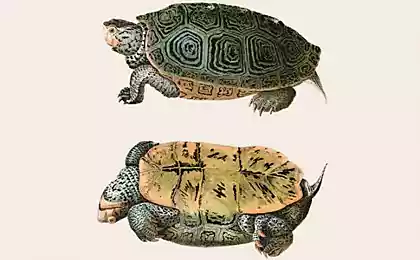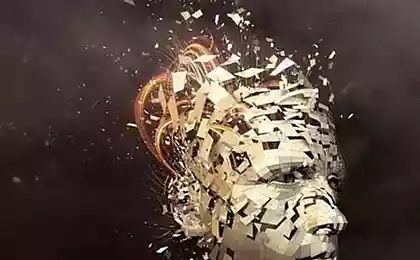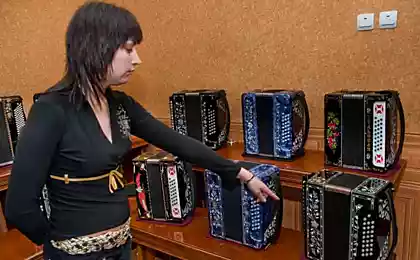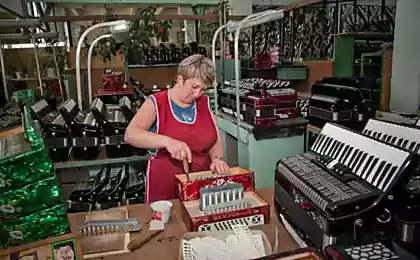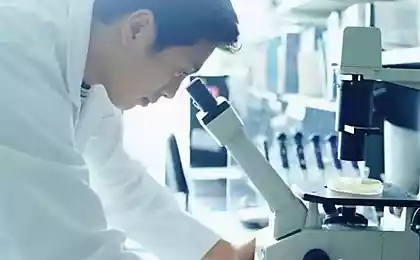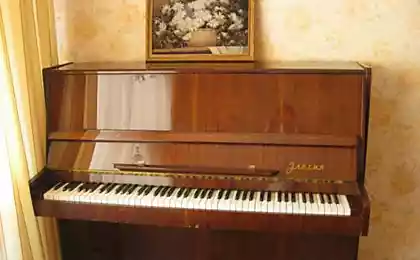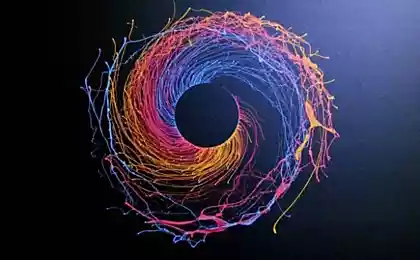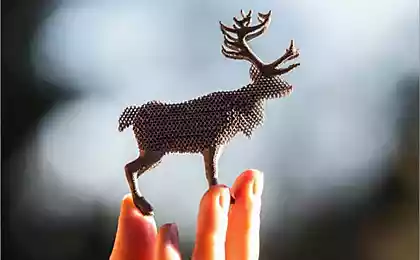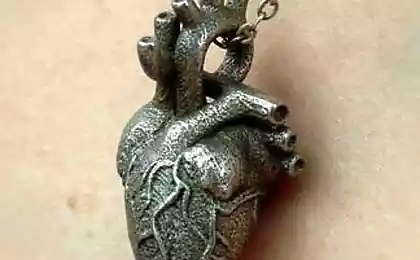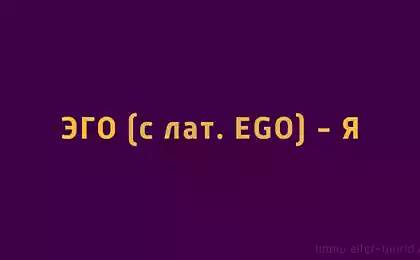So, the fashion for 3D-printing has reached our modest establishment, proudly called
Laboratory of Molecular Biology . A couple of weeks ago, workshops bought 3D-printer than initiated a heated debate among scientists, biologists - the new thing can be useful. Physiology, for example, had already gathered to print some complex parts for the new mechanism designed to test all sorts of behavioral responses in rats. We hold certain
three-dimensional protein structure by X-ray analysis (and, for some time now, cryo-electron microscopy) and for us to benefit from 3D-printing is not so obvious. Accordingly, we porylis the internet to see what people in terms of protein structures prints. The resulting obzorchik with beautiful pictures and videos published models - under the cut.
Brief about protein structures h4> As rightly observed more than a hundred years ago, comrade Friedrich Engels, "life has a way of existence of protein bodies." That is, our body is largely made of protein and proteins serve important functions in our body - structural (cell shape is kept at the protein cytoskeleton), motor (muscles contract through tricky work of motor proteins), enzymatic (say, the food is digested through enzyme protein ), transport (oxygen from the lungs to the tissues drags protein hemoglobin), and so on; In short, without protein - anywhere.
Accordingly, it is very interesting to know how proteins work. From the perspective of a biochemist, protein - is a black box. You can give it a different substance to the input and then see what happens at the output (at what speed, etc.). The determination of the three-dimensional structure of a protein molecule in a sense, this opens up the black box, the structure of the protein - a diagram of how the black box is arranged inside. Not always from the structure fails to immediately understand how the protein works, but the structure is definitely opens our eyes and allows us to plan further experiments.
Protein - this is a very large molecule (macromolecule). From a chemical standpoint, this - a linear polymer and a length of from 70 to more than 1000-amino acid monomers. Due to the different amino acid side groups long protein molecule folds into a compact globule, for each protein characterized by its own styling. It is a collapsed structure of the protein, scientists and define. The leading method is X-ray analysis, which allows to calculate the coordinates of the atoms of the protein by X-ray diffraction on a crystal of the corresponding protein. Do scientists crystallographers acts convention - any definite structure of the protein must be laid out in the Protein Data Bank ( PDB, Protein Data Bank ), in which the number of structures already exceeded 100 000. Accordingly, all the structures are in the public domain, they can download, view, print the 3D-printer, and so on. Read more about the structures of protein I wrote Habré before; in more expanded form about the structure can be read here .
It should be noted that the task of mapping the structure of the protein is not so simple. The protein is composed of several thousand atoms, which, at first glance, seem creepy porridge ("A" and "B" in the picture). For different tasks using different display. For example, if we want to understand how to meet the main chain of the protein, then we want to display the protein in schematic form, which will be listed only the course of the main chain ("g" in the picture) using a special notation - the spiral to indicate alpha helices, arrows for designations beta pleated sheets ("d", "e" in the picture).
If we want to see the protein as three-dimensional body, it can display a surface protein (then it becomes similar to a potato); surface can be painted with different parameters. The most useful - paint by electrostatic potential, then it will be clear the charged area.
If we want to understand how our protein binding molecule drugs or chemical substrate, it displays only a small portion of the protein - the active site of the enzyme, a small number of key amino acids that directly interact with the drug.
Printed protein structure h4> To begin with - a few entertaining videos.
Here is a very clear demonstration of how much protein molecules actin collected in the so-called "actin filaments", which constitute the cytoskeleton, which supports the form of our cells, muscle plus it also works. Individual molecules of actin printed on the 3D-printer, the surface is colored by electrostatic potential.
Here's something abruptly: molecule гемоглобина, carries oxygen in the body (packed red blood cells to the protein). Hemoglobin is composed of four subunits (individual protein molecules), plus a small molecule binds to hemoglobin heme iron atom of the carrier, and that binds oxygen. In the manufacture of this model is to use more complex since. process and the resulting clear outer surface reflects the real surface of the protein molecule, and inside a transparent outer layer, visible colored alpha-helix, and other elements of the secondary structure, clearly showing the progress of the main chain of the protein. The video shows the assembly of the whole of the four subunits of hemoglobin subunits are mounted on magnets. At the very end is thrust into place small molecule heme.
Here is another video of the same model, here it is better seen on the secondary structure and shows how the model in lowering the water allows you to see the secondary structure more contrast. Another difference - in this model, the outer layer of the protein is not just transparent, as in the last version, and besides, slightly tinted electrostatic potential:
These videos are taken from the Japanese enthusiast channel 3D-printing protein Kawakami Masaru, more videos with different printed pattern of the protein can be found here:
http://www.youtube.com/channel/UCsrgChR36VUMVy8GejyuD0Q/videos
Of course, savvy businessmen could not pick up the idea and production of molecular beauty has put on stream, such cognitive structure of the protein can already buy .
Again, if you want to print your protein, it does not necessarily buy the 3D-printer. Already have a sufficient number of companies selling as presets (for example, three-dimensional model of DNA) and performs printing of any protein to order. For example, 3D Molecular Designs .
To a question about the business: besides the 3D-printing, there has long been a company willing print three-dimensional structure of your favorite protein in transparent crystals . The idea is quite in demand by structural biologists, for example, similar to the crystal boss gave one of my friend after she identified her first protein structure. The scientific value of such a crystal tends to zero, but it looks very beautiful and aesthetically pleasing.
If someone thinks that this is all jokes and mischief - not at all. The seriousness of the situation, the recently launched repository 3D-ready models from the US NIH - National Institutes of Health in collaboration with the National Library of Medicine (this most serious structure belonging to the US Department of Health). In addition to the high-protein structures (X-ray crystallography) and low resolution (cryo-electron microscopy), and are visible in the repository model supports under laboratory test tubes and other small items. The repository is created, as I understand it, in order to improve internal communication models in NIH. Now it 452 model.
How to print the structure of a protein h4> If you are inspired by the above cited pictures and have access to the 3D-printer, the print itself is easy enough protein structure. On the Internet there are a lot of step by step instructions, here are the two most intelligent and detailed:
http://www.instructables.com/id/3D-Print-a-Protein-Modeling-a-Molecular-Machine/?ALLSTEPS
http://www.over-engineered.com/projects/3d-printed-protein
In short, you must first install one of the programs for the отображения protein structures . Then - to find the structure to be printed. All structures are in Protein Data Bank , there is a keyword search. In addition to search, they have a wonderful project «Molecule of the Month» - they choose a certain protein and explain in detail about his structure and function to a wider audience of non-professionals. Home page of the project is daunting because of the abundance of obscure names of proteins, but if you start to click on the links there are beautiful pictures and clear descriptions of work and the structure of a protein. I hope this information will help you choose the protein release.
After loading the structure (in the Protein Data Bank has a wonderful a button «Download files») and its display in the appropriate program, you must choose the form in which you want to print molecule. The above instructions are invited to display the protein in the form of surface, painted by electrostatic potential, surface export, convert it into a format for printing and - voila! Similar to potato print three-dimensional model of the protein is really easy.
However, it would be interesting to print, say, a schematic map of the main chain of the protein, something like this (here, as far as I can see, a complex of protein and DNA):
The only thing such a skeletal structure of the protein may be fragile. For this print recommend to use the program to display protein structures Chimera , since it is able to directly export .stl-files, understands most 3D-printers. Accordingly, any chosen type of molecule in the Chimera safely exported and can be printed, including skeletal representation. Here's a quick video presentation, somewhat explains this process:
Conclusion (or what for goat accordion) h4> As we have just seen, the people actively prints of protein structure. Open question remains: why do they do it? So far the only answer - in education, demonstration, training purposes. Proteins - the complex three-dimensional objects and the ability to hold a "molecule" in the hand, of course, contributes to the understanding of how the protein works internally. Plus, many proteins just visually beautiful. Print the skeletal structure of a protein can be quite serious technical challenge, and then - an impressive demonstration of 3D-printing capabilities. So if you have a 3D-printer, free time and enthusiasm ... you know what to do!
This beautiful - рибосома.
Source: habrahabr.ru/post/238451/


